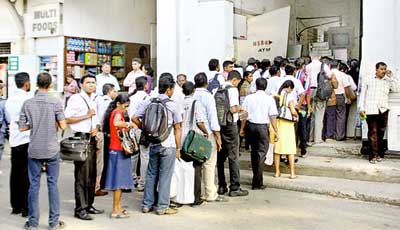12 Jun 2013 - {{hitsCtrl.values.hits}}
.jpg) Much has been said about Sri Lanka’s potential for growth, and indeed there are many national and corporate plans being rolled out towards this end. There is high focus on several key areas of improvement, such as Infrastructure, policy frameworks, citizen services, education and so on.
Much has been said about Sri Lanka’s potential for growth, and indeed there are many national and corporate plans being rolled out towards this end. There is high focus on several key areas of improvement, such as Infrastructure, policy frameworks, citizen services, education and so on. Mindset
Mindset
26 Nov 2024 1 hours ago
26 Nov 2024 2 hours ago
26 Nov 2024 2 hours ago
26 Nov 2024 3 hours ago
26 Nov 2024 4 hours ago